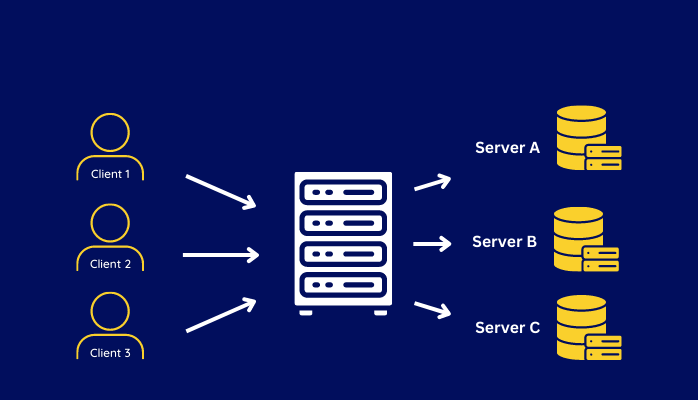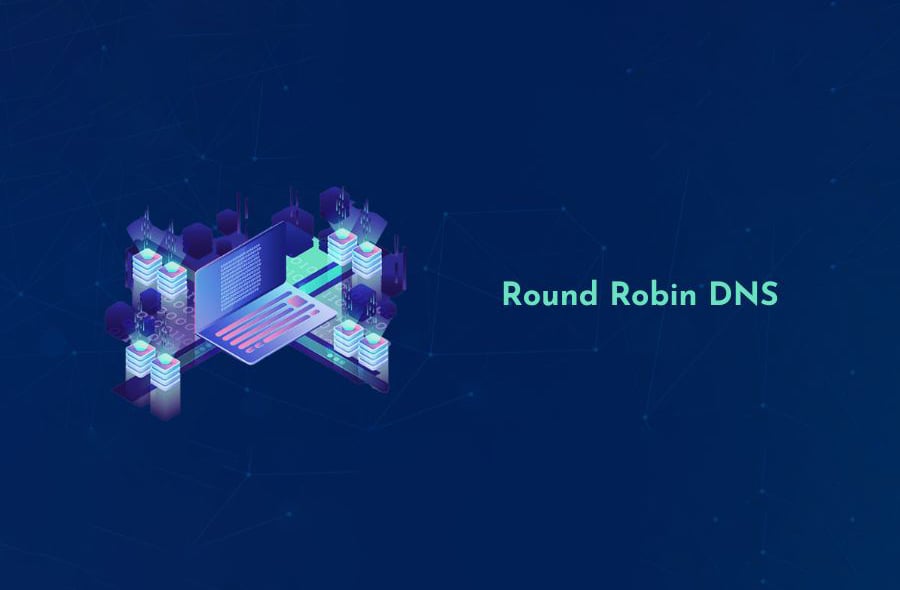What is Round-Robin DNS?
In the world of Internet infrastructure, there are many ways to distribute traffic across a set of servers. One such method is round-robin DNS. Round-robin DNS is a technique that distributes traffic across multiple servers by rotating through a list of IP addresses associated with a single hostname. While this approach may seem like a quick and easy way to distribute traffic, there are some significant drawbacks to consider.
What is Round-Robin DNS?
Round-robin DNS is a load-balancing technique where the balancing is done by a DNS server called an authoritative nameserver rather than a dedicated piece of load-balancing hardware. Round-robin DNS can be used when a website or service has its content hosted on several redundant web servers; when the DNS authoritative nameserver is queried for an IP address, the server hands out a different address each time, operating on a rotation. This is particularly useful when the redundant web servers are geographically separated, making traditional load-balancing difficult. Round-robin is known for its ease of implementation but also has strong drawbacks.
A DNS server with round-robin enabled will have multiple different A records, each with the same domain name but a different IP address. Each time the DNS server is queried, it sends the IP address to which it most recently responded to the back of the queue, operating on a loop. The IP addresses in a round-robin DNS server are like baseball players in a batting lineup: each one gets a turn and then is moved to the back of the line.

Why do you need Round-Robin DNS?
These days, load balancing is essential for huge web services that generate a tremendous amount of traffic. As you can imagine, web servers can easily get overloaded. For that reason, Round-Robin is certainly a good approach for avoiding such incidents. It is a proper way and one of the most commonly used methods to split the traffic on your servers.
How does it work?
Instead of using a specific load-balancing item of hardware to distribute traffic, when using a Round-robin DNS, an authoritative nameserver will do the balancing.
Round robin only works if the website’s or the service’s content is hosted on several redundant web servers. A redundant server is a replica of a system that incorporates lines of communication and network devices. If the primary DNS server goes down, it can act as the main operating system.
When repeatedly queried for an IP address, the DNS authoritative nameserver returns each time a different IP address. It picks those addresses in a rotational order:
- User no 1 makes a query for the example.com page and is pointed to the first IP address.
- User no 2 requests to access the example.com page and is taken to the second IP address.
- User no 3 asks to access example.com and is pointed to the third IP address.
- When user no 4 also makes a query for the example.com page he is sent to the first IP address. That is how the Round-robin algorithm goes.
A DNS server with a round-robin configuration has multiple different A records that point to the same domain name while displaying a different IP address. It operates in a loop. Each time it gets a query, the DNS server sends the IP address it most recently used to the back of the line.
This way, the IP addresses in a round-robin DNS server work like the wheel spikes of a bike: each one gets to fall perpendicularly on the ground one after the other.
Some benefits
- Easy to implement: Round-robin DNS is easy to implement and does not require any special skills or knowledge.
- Improved scalability: It distributes incoming traffic among multiple servers, which helps to handle more requests and improve scalability.
- Load balancing: With this technique, the load is balanced among the available servers, which helps to prevent overloading any single server.
- High availability: Round-robin DNS helps to ensure high availability by directing traffic to available servers. If one server goes down, the traffic is automatically directed to the remaining servers.
- Cost-effective: Round-Robin DNS is a cost-effective solution to distribute traffic among multiple servers. It does not require any additional hardware or software, and it can be easily configured.

Disadvantages
Unfortunately, Round-robin DNS also comes with a series of drawbacks.
- Uneven traffic distribution: Because of DNS caching and client-side caching, it doesn’t always succeed in evenly distributed traffic. When a user makes a query to a high-traffic recursive resolver for a certain site, the resolver will cache the website’s IP and could continue to send a great amount of traffic to that one IP.
- No failure detection: If one of the multiple servers goes offline, the algorithm continues to use it and direct queries to it. Usually, its A record has to be removed manually from the loop. Otherwise, each time traffic is directed to the fallen server, one unlucky user will be denied service.
- Equal priority: There are also downsides to treating each request equally. With the Round-robin DNS technique, you can’t prioritize processes, no matter how important they are.
Conclusion
While round-robin DNS may seem like a simple and convenient way to distribute traffic across multiple servers, it has significant limitations that can negatively impact performance and user experience.
Load balancers provide a much more robust and intelligent solution that addresses these limitations and provides additional features and capabilities. So, if you are considering a traffic distribution solution for your website or application, a load balancer is almost always the better option.